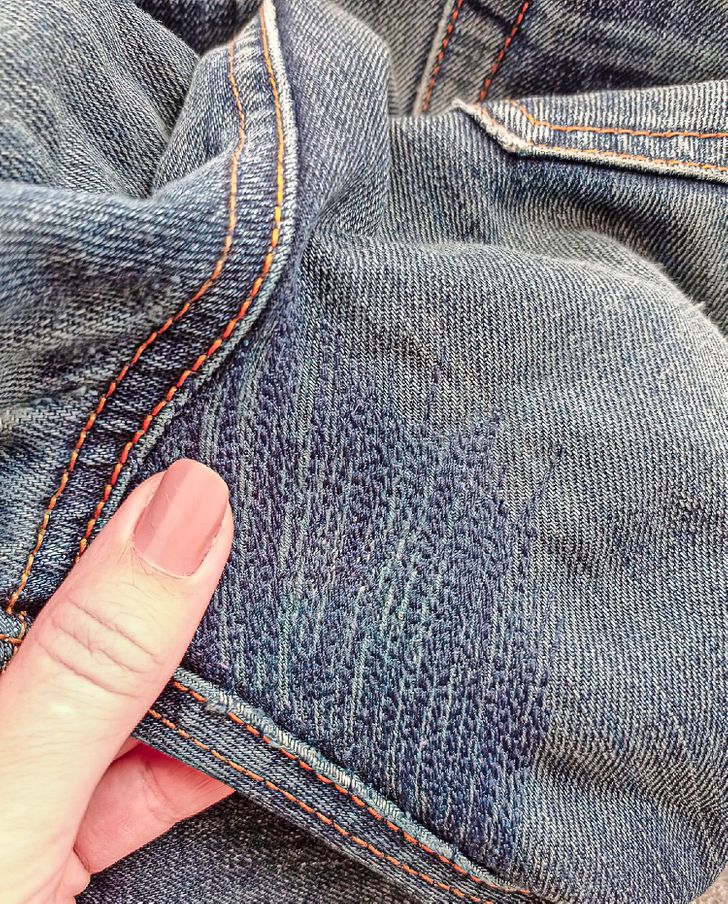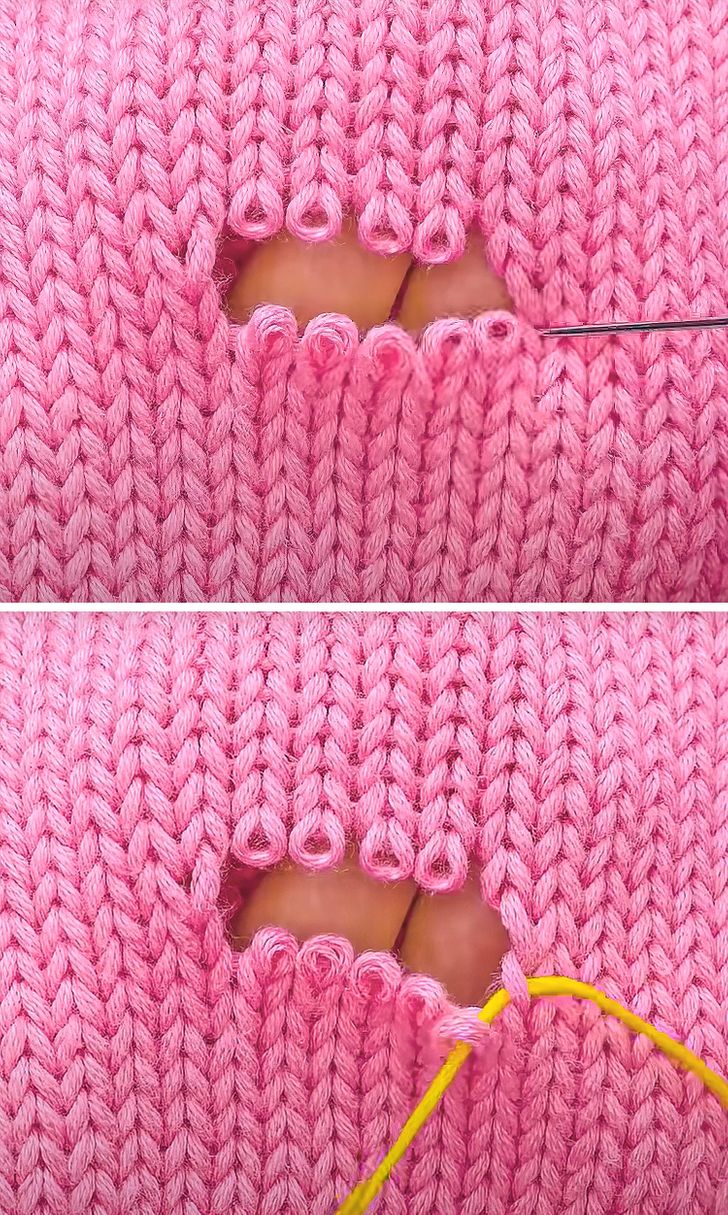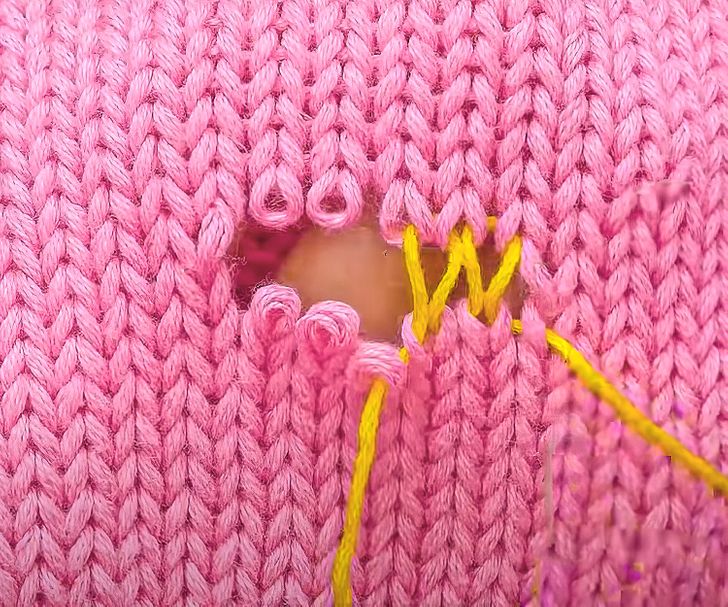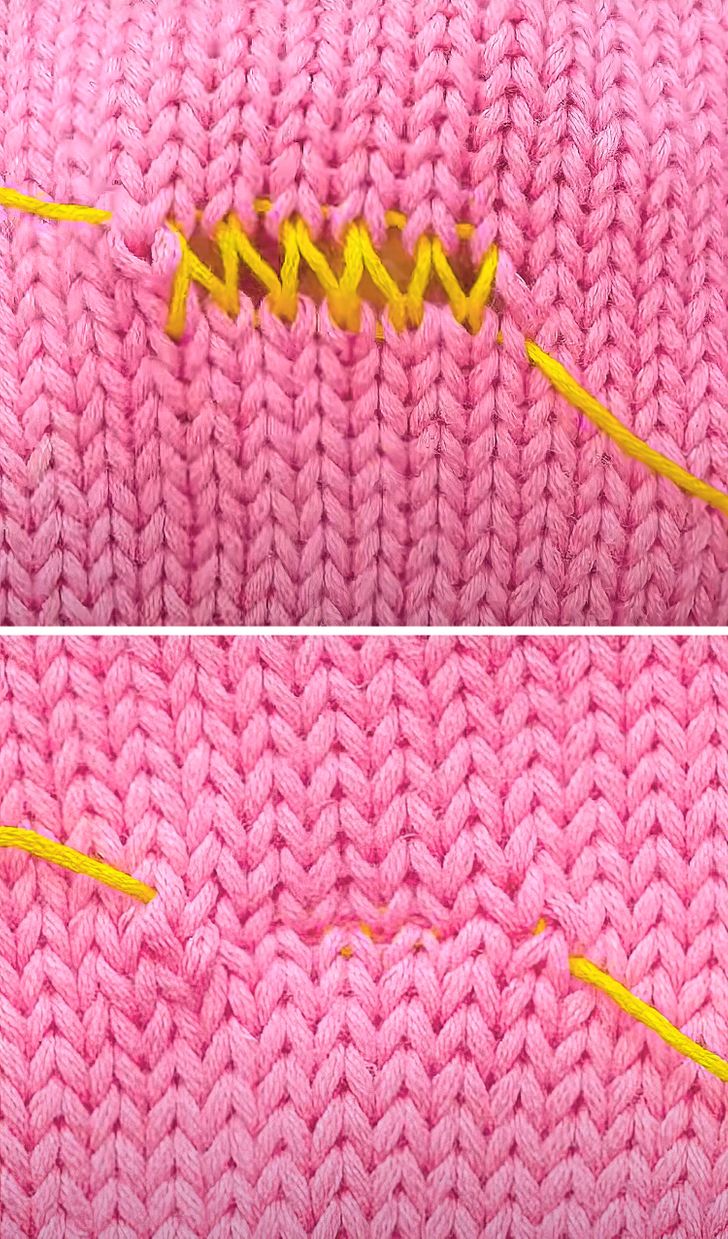How to Sew Up a Hole in Your Clothes
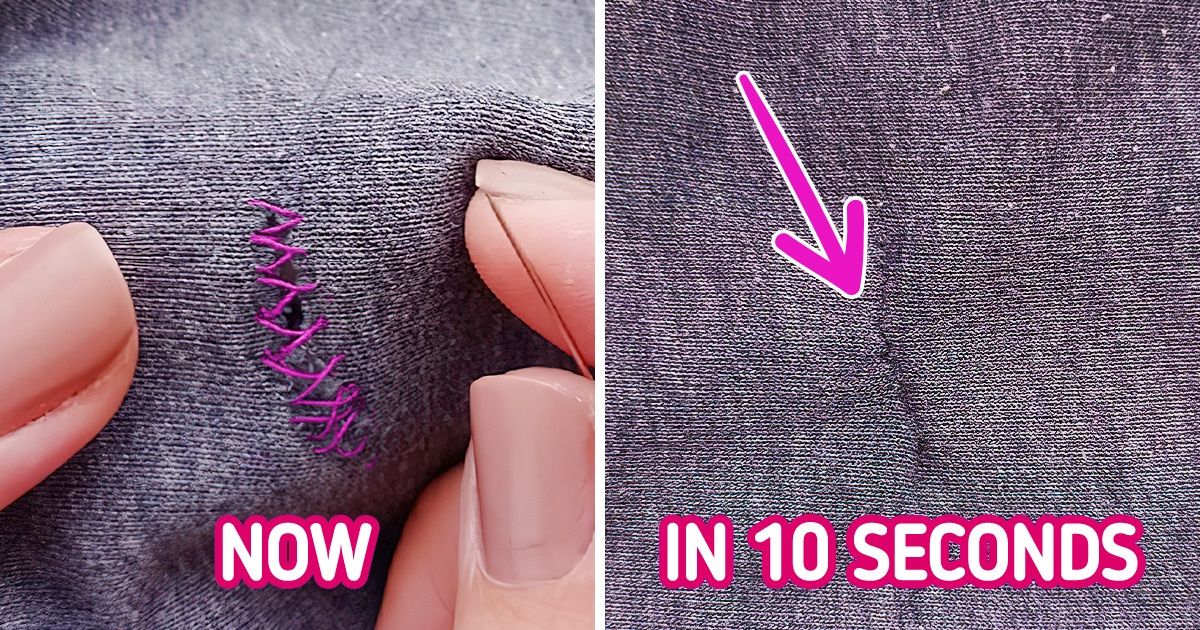
Sometimes a small hole in your dress, T-shirt, or pants can seriously ruin your mood. That’s because it always seems to appear unexpectedly, and it can grow really big in just a couple of hours.
5-Minute Crafts will help you to sew up a hole in your clothes quickly and neatly.
Method 1
1. Turn the item you want to sew inside out and carefully join the edges of the hole together.
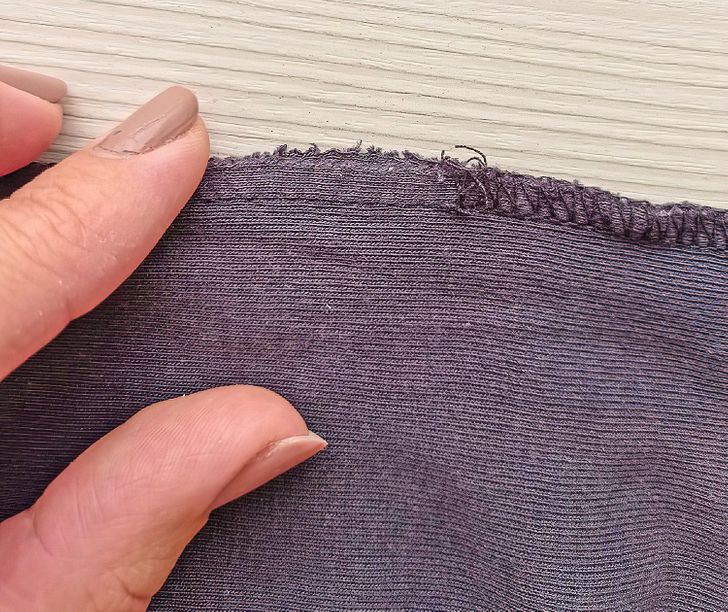
2. Thread a needle and tie a small knot at the end of the thread.
3. Step back 5 mm from the fabric’s edge and sew the hole with the backstitch.
The backstitch is done like this:
- Pierce the fabric with a needle and pull the thread out on the opposite side.
- Step back with the needle and let it come out in front of the resulting stitch.
- Repeat the stitches until you’ve sewn up the entire hole.
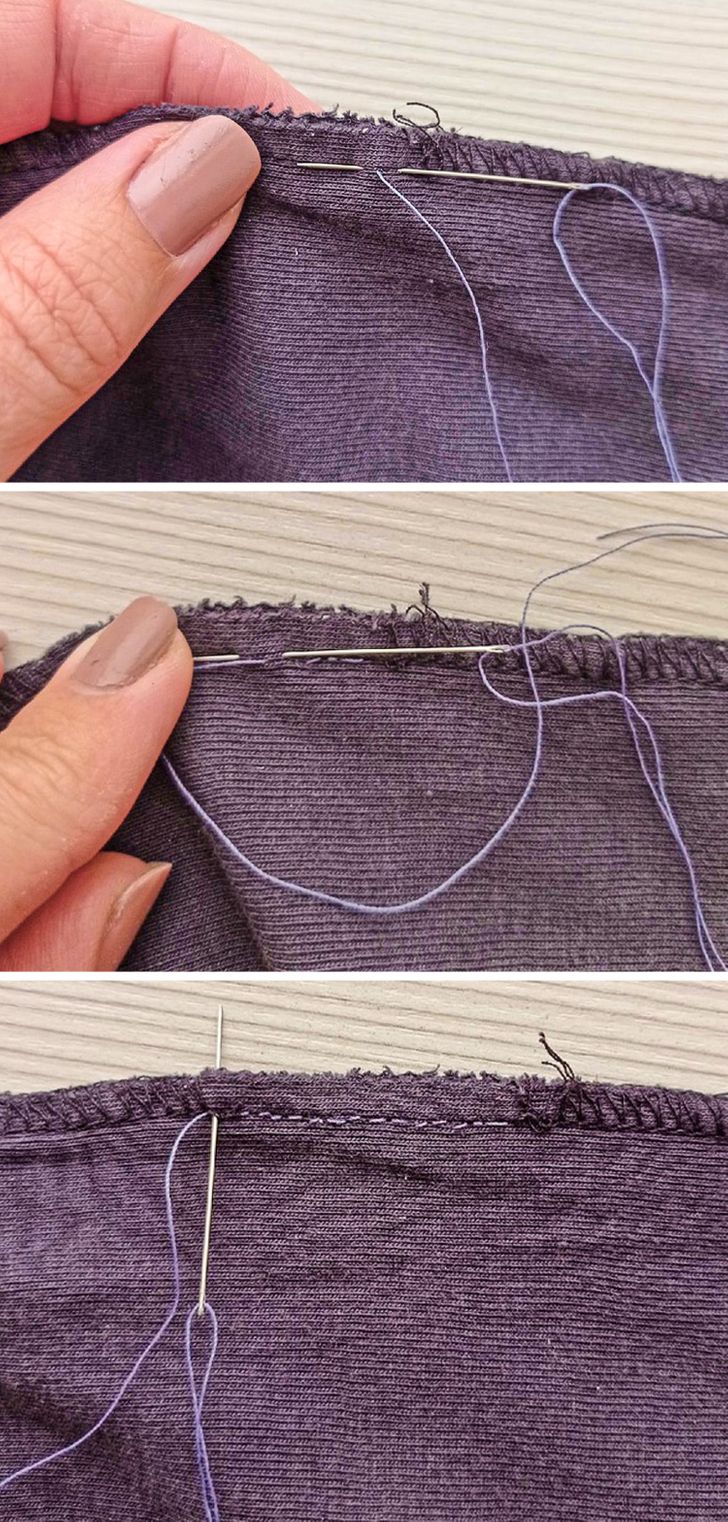
4. To prevent edges of the fabric from shedding, pierce both layers of the fabric through, pass the thread over the needle, and pull the needle out. Return to the side you started on and make another stitch in the same way.
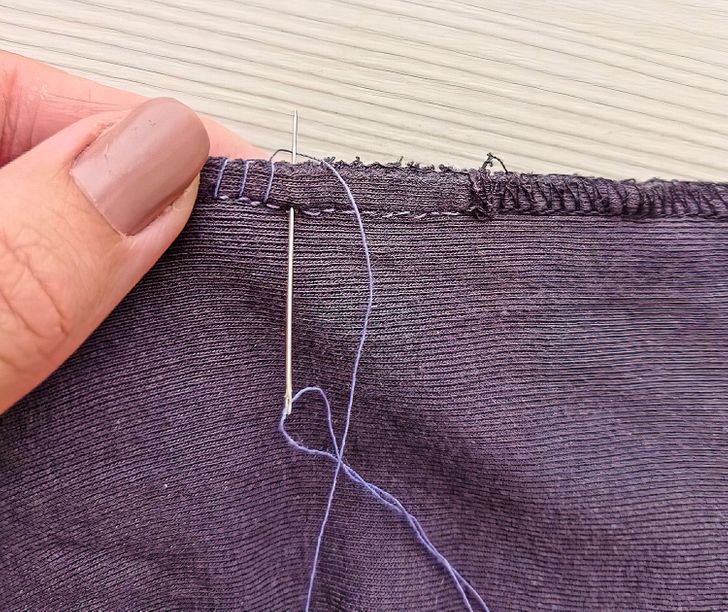
5. Overstitch the edges this way, then tie a knot at the end of the thread.
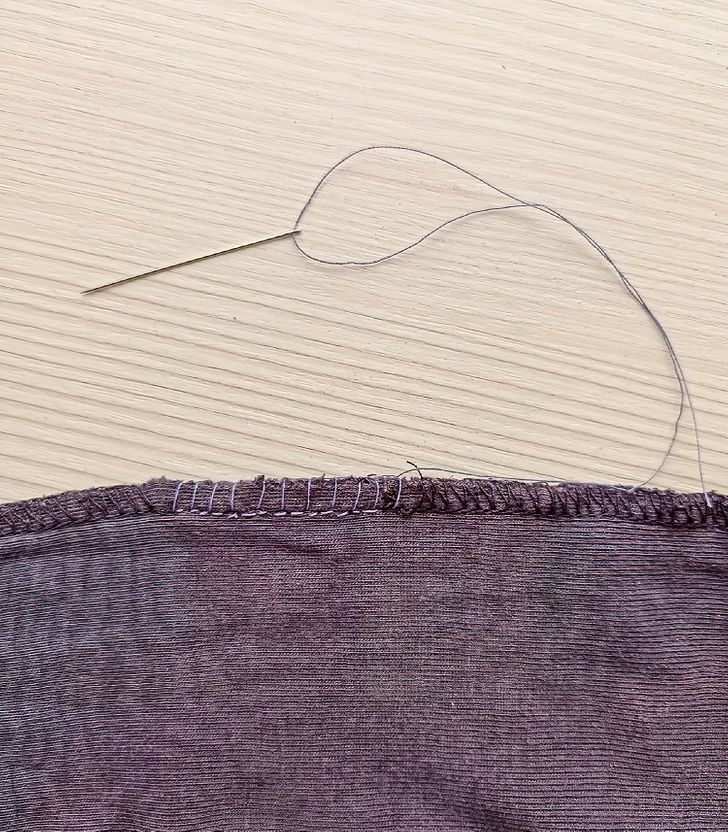
6. Turn the garment right side out and check the result.
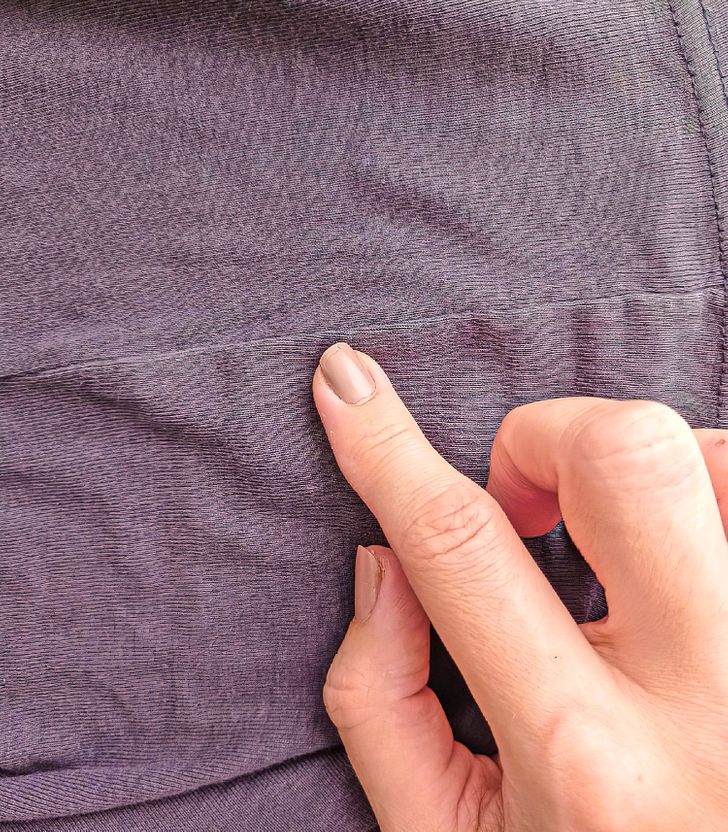
Method 2
1. Thread the needle and tie a small knot at the end of the thread.
2. Make the first stitch from the left edge of the hole on the inner side of the fabric to the right side.
3. Make a stitch from the left edge of the hole to the right edge. Use the needle to pick up a small section of the fabric on the right edge of the hole and pass the needle and thread through it.
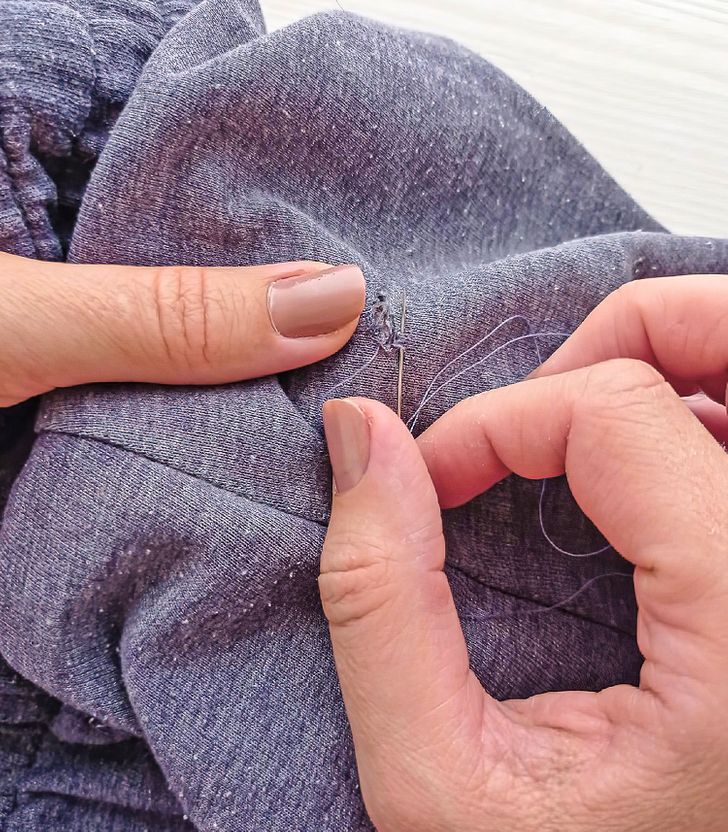
4. Now make a stitch through the hole to the left edge, and then do the same actions as described in the previous stage. Try to make stitches small, almost invisible, so that the seam looks neat.
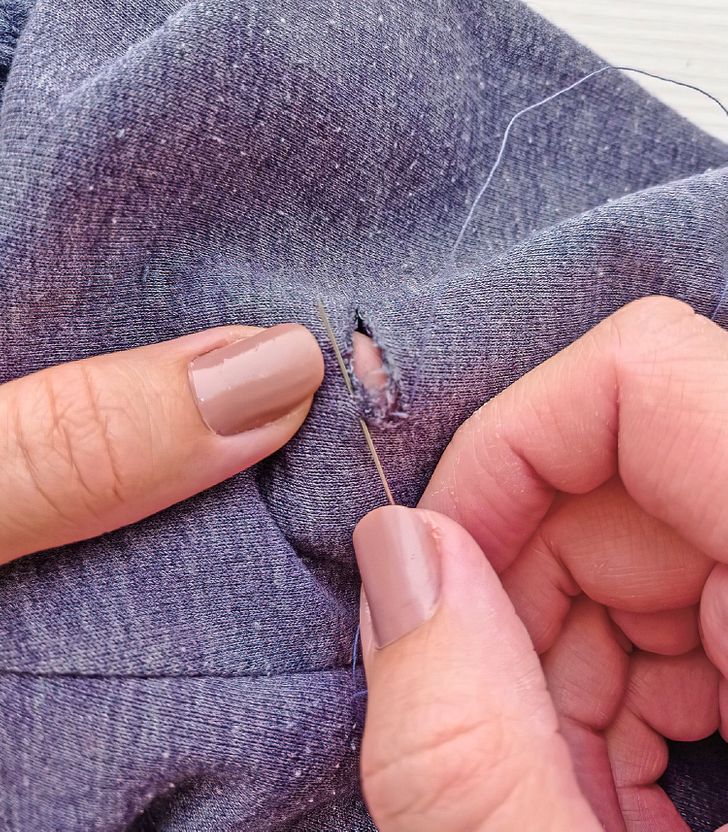
5. Sew up the entire hole this way, then pull the thread to make the edges of the hole join.
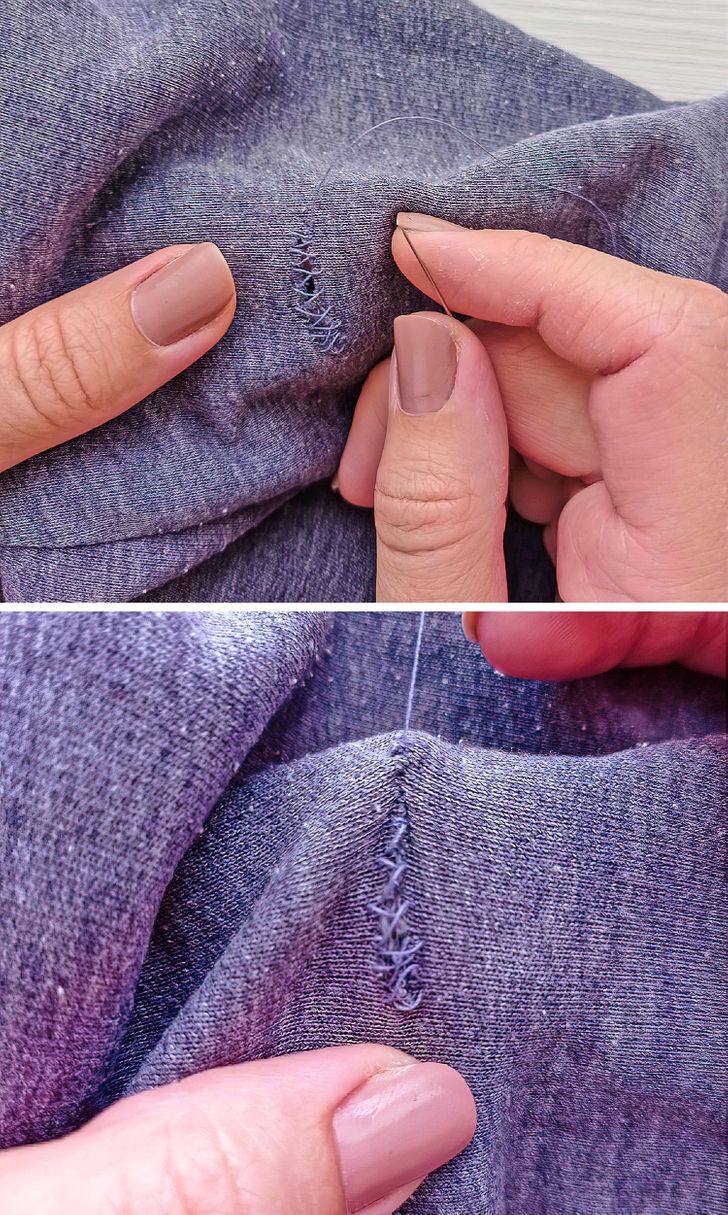
6. Let the needle come out through the inner side of the fabric, and tie a knot to secure the result.
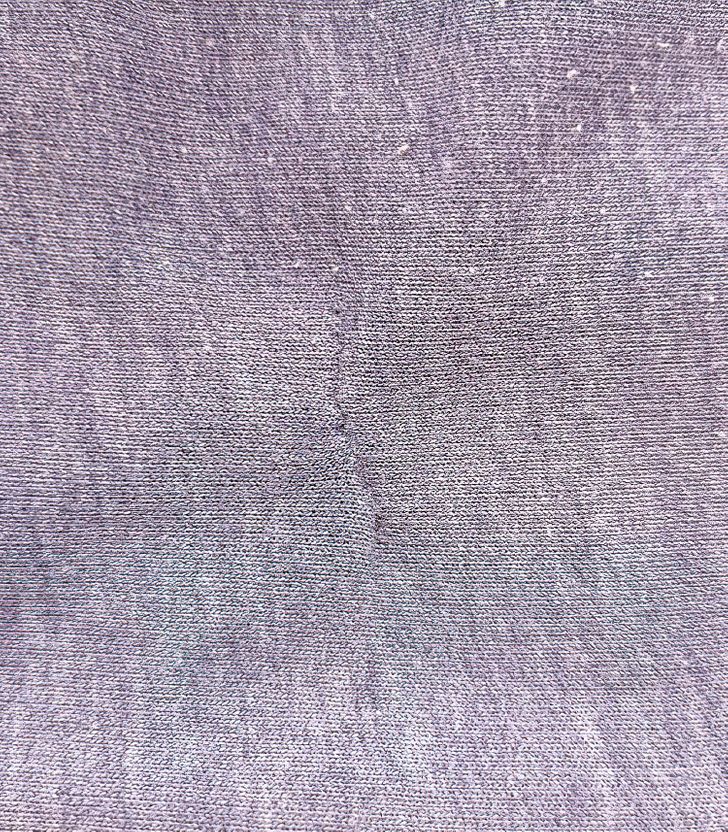
Method 3
This method will help you mend holes in knitting.
1. If there are threads sticking out along the edges of the hole, carefully hide them or bring them to the inner side.
2. Thread the needle and tie a knot at the end of the thread.
3. Pierce the needle through one of the outermost loops, then pierce it through an adjacent loop on the same side of the hole.
4. Pull the thread through the loops, then pass it through 2 adjacent loops on the opposite edge of the hole.
5. Pull the thread again, then pass it through the 2 loops on the opposite side. Please note that you must pull the thread through every 2 adjacent loops to avoid gaps.
6. Stitch all the way to the end of the hole, then pull the thread lightly. Let the needle come out on the inner side of the garment and tie a knot.
Method 4
This method works well when mending jeans, and it’s suitable for those who have a sewing machine.
1. Choose threads that match the color of the fabric and thread the machine with them. In this method, the color thread you use is especially important since the stitching will be quite visible.
Life hack: To make sure the thread matches the color of your jeans, use 2 closely related colors: one darker, and the other one, slightly lighter. Thread the machine with one thread at the top and the other at the bottom.
2. Also prepare a small piece of thin fabric, like lining fabric. Its color is not very important.
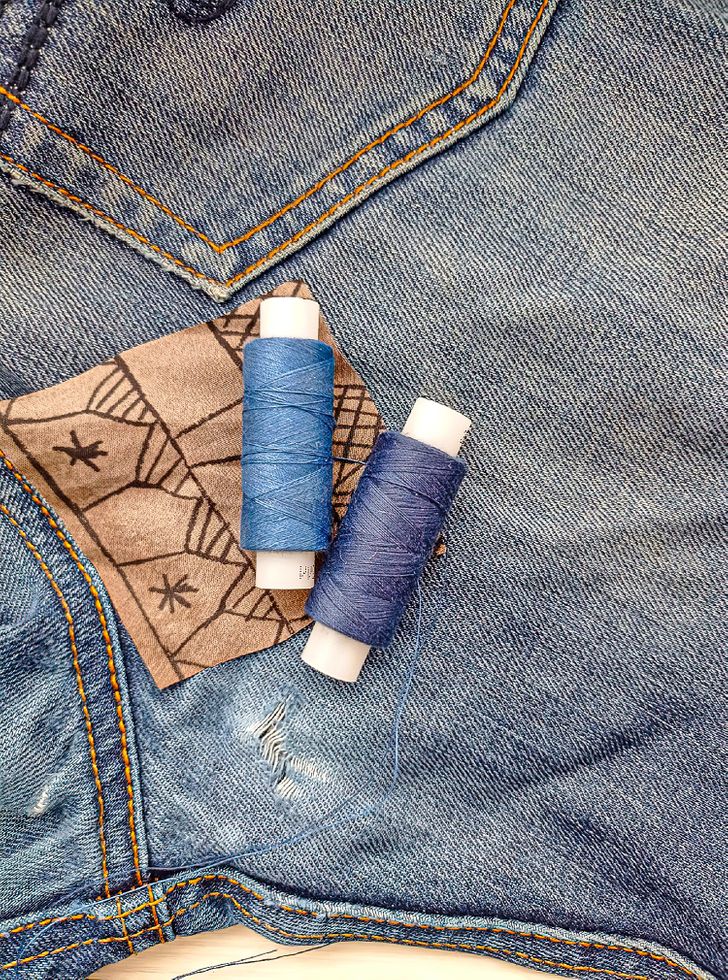
3. Smooth the area with the hole and pin the prepared piece of fabric to it on the inner side. To prevent the patch from moving, you can attach it with coarse stitches.
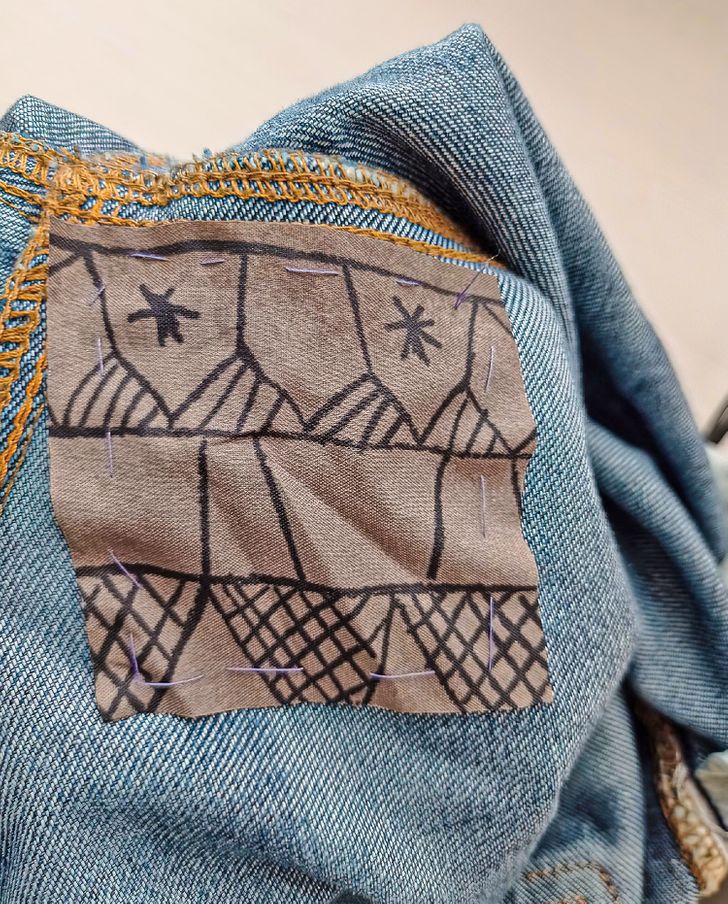
4. Set the stitch width to 1.5mm to 2 mm and lower the presser foot onto the fabric next to the hole (sew on the right side of the garment).
5. Stitch along the length of the hole and use the reverse function to go back. Don’t move exactly along the previous line, but slightly next to it.
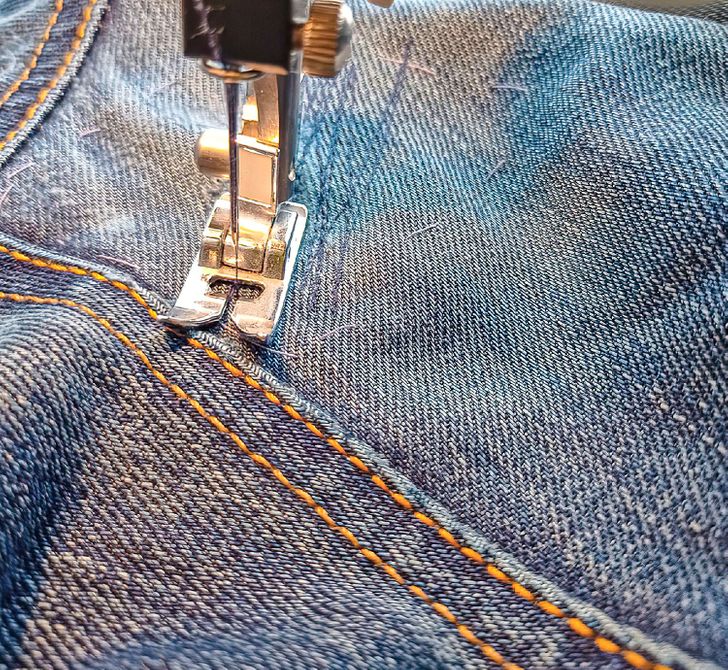
6. Now sew up the hole by moving back and forth. Stitch not only at the tear but also around it. Move the presser foot along the fabric pattern.
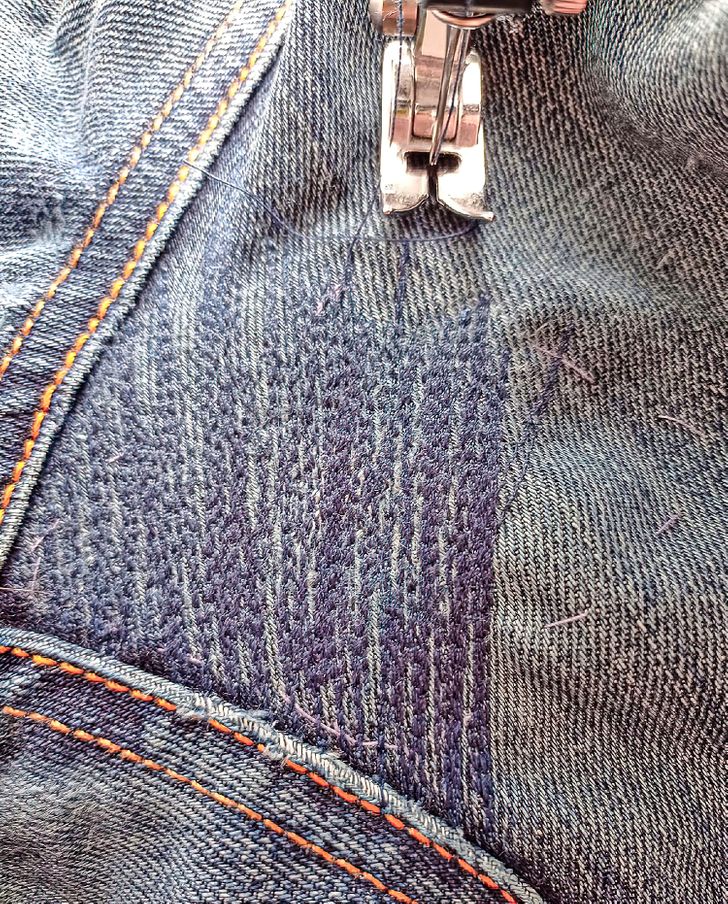
7. The thinner the area that needs to be mended, the more layers of stitching should be applied to it. When finished, cut off the threads and remove the coarse stitches if you used them to secure the lining.
